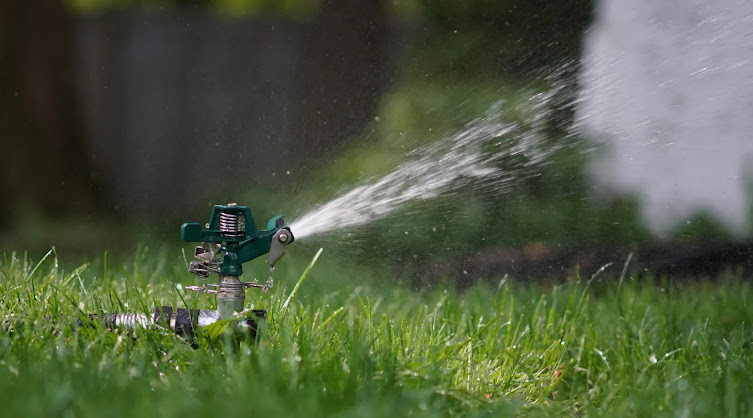8 Key Factors to Consider When Installing Irrigation Systems in Saudi Arabia | Irrigation Installation Saudi Arabia
Installing an irrigation system in Saudi Arabia requires careful planning and consideration, given the country's harsh climate, limited water resources, and diverse agricultural needs. An efficient irrigation system is crucial to ensuring that crops and landscapes thrive in the arid conditions of the region. Here are eight key factors to consider when installing irrigation systems in Saudi Arabia:
1. Water Availability and Sources
Water scarcity is one of the biggest challenges in Saudi Arabia. Before installing an irrigation system, it’s essential to assess the water sources available. These can include groundwater, desalinated water, or recycled water. Understanding the quantity, quality, and cost of water from these sources will help determine the type of irrigation system that’s most suitable.
For example, in regions where groundwater is used, it’s important to install a system that minimizes water wastage and maximizes efficiency. Drip irrigation, which targets the root zone directly, is a popular choice in these areas.
2. Climate and Weather Conditions
Saudi Arabia experiences extreme heat, especially during the summer months, with temperatures soaring above 40°C (104°F). The climate, combined with the low annual rainfall, means that irrigation systems need to be designed to withstand high temperatures and provide consistent water supply.
Additionally, wind is a significant factor in arid regions, as it can cause evaporation and reduce irrigation efficiency. Systems such as drip and subsurface irrigation are often favored in these environments due to their water conservation properties.
3. Soil Type and Terrain
The type of soil in the area plays a major role in determining the type of irrigation system. Sandy soils, which are common in Saudi Arabia, tend to drain water quickly, requiring more frequent irrigation to ensure that plants receive adequate moisture. In contrast, clay soils retain moisture longer, meaning less frequent irrigation is needed.
Understanding soil properties allows you to optimize water delivery, as well as to determine whether a surface, drip, or sprinkler irrigation system will be most effective for the particular landscape.
4. Irrigation System Design and Technology
When it comes to irrigation installation in Saudi Arabia, choosing the right design and technology is critical. Advances in irrigation technology, such as automated systems, weather-based controllers, and sensors, can greatly improve efficiency by ensuring that water is only applied when needed. This not only conserves water but also reduces energy consumption.
Drip irrigation systems are particularly effective for crops, providing precise water delivery at the root level. Sprinkler systems, on the other hand, may be more appropriate for larger fields or lawns but need to be designed to minimize evaporation.
5. Water Conservation and Efficiency
In Saudi Arabia, conserving water is paramount due to the country’s limited water resources. Installing an irrigation system that prioritizes water efficiency can save significant amounts of water, reduce operating costs, and ensure sustainable agricultural practices. Drip irrigation, for example, delivers water directly to plant roots, reducing evaporation losses and runoff.
Additionally, implementing soil moisture sensors can help monitor the water needs of plants in real time, ensuring that the system is operating optimally and avoiding over-irrigation.
6. Maintenance and Durability
Irrigation systems in Saudi Arabia need to be robust and able to withstand the extreme weather conditions. Regular maintenance is essential to keep the system functioning efficiently and to prevent damage from factors such as dust, sand, and corrosion.
Choosing high-quality materials for pipes, filters, and emitters can enhance the durability of the system. Furthermore, opting for systems with low maintenance requirements, such as drip irrigation or subsurface irrigation, can help reduce long-term operational costs.
7. Cost and Budget Considerations
The initial installation cost of an irrigation system can vary significantly depending on the scale, complexity, and type of system chosen. While some systems may have higher upfront costs, they often offer savings over time due to reduced water usage and lower maintenance requirements.
When planning an irrigation installation in Saudi Arabia, it’s essential to set a realistic budget that accounts for both installation and ongoing maintenance costs. Consider seeking professional advice to help balance cost-efficiency with long-term benefits.
8. Regulations and Compliance
Saudi Arabia has strict regulations in place to manage its water resources efficiently. It’s important to ensure that any irrigation system installed complies with local water management laws and environmental guidelines. This includes obtaining necessary permits and approvals from local authorities.
Additionally, staying informed about changes in regulations can help ensure that the system remains compliant over time, avoiding fines or penalties.
Conclusion
Installing an irrigation system in Saudi Arabia requires careful planning to account for the region’s unique climate, soil conditions, and water scarcity. By considering factors such as water availability, soil types, irrigation technology, and water efficiency, you can design a system that not only meets the needs of the plants but also conserves precious water resources.
Investing in the right irrigation installation for Saudi Arabia can lead to more sustainable agriculture, improved crop yields, and efficient water management, contributing to the long-term success of agricultural endeavors in the region.

Comments
Post a Comment